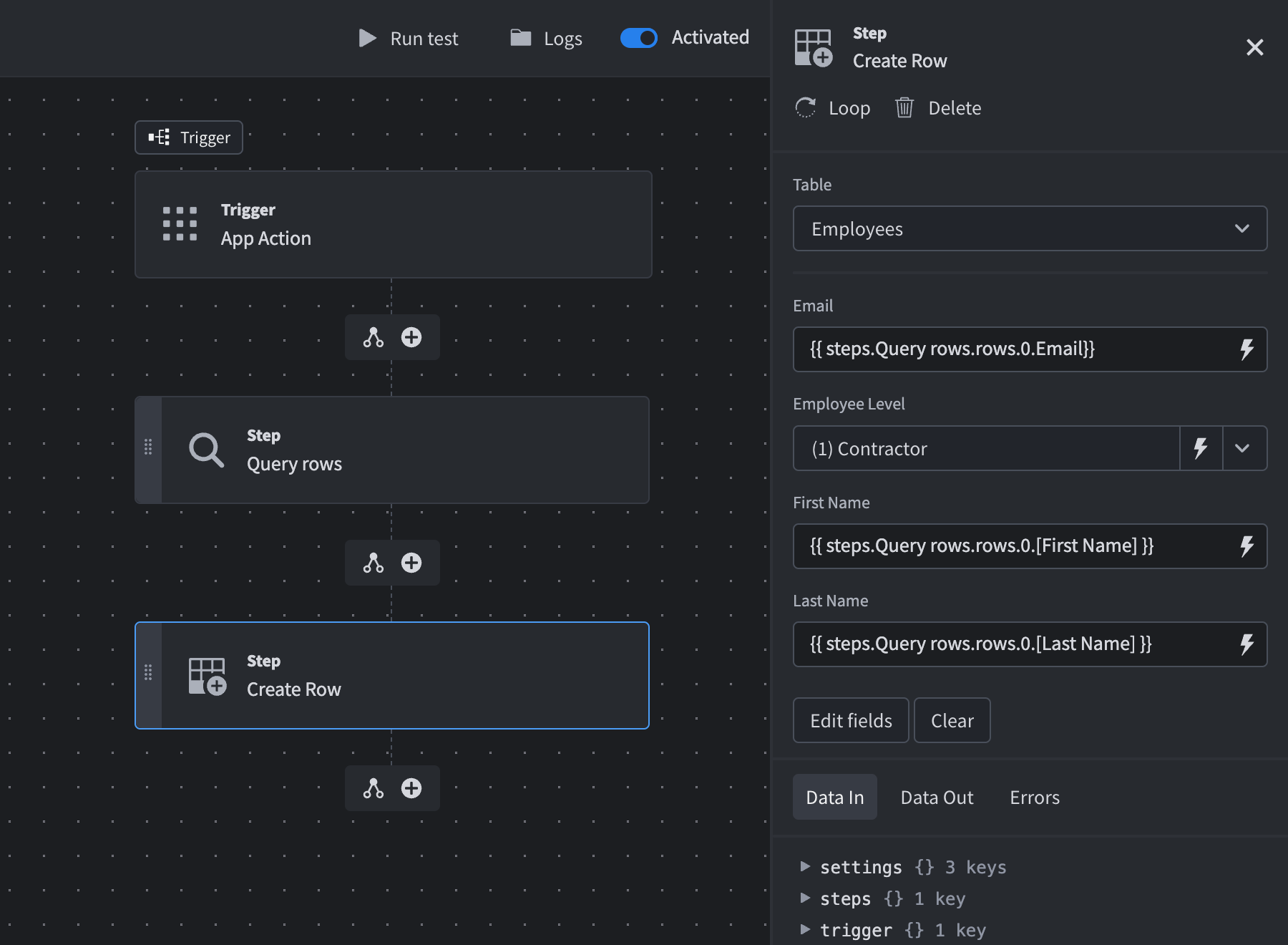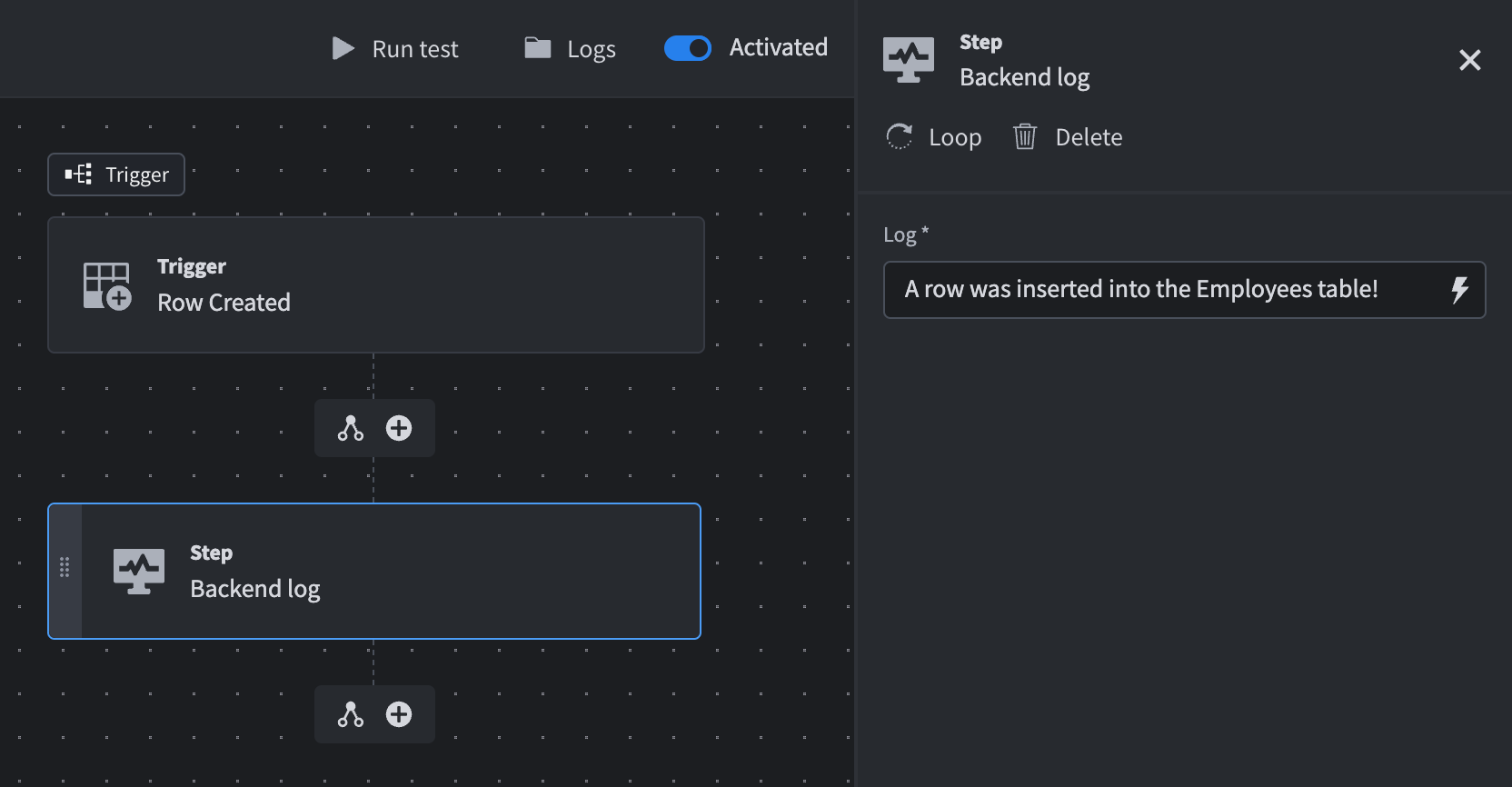History and settings
It is possible to see a list of automation runs for your published apps. To do so, click the automation you wish to view and the click the logs button within the automation.

This will open up a sidepanel with all successful and failed runs of an automation.

You can filter and order the logs by automation name, data range, and status.
There are three statuses:
- Success: The automation run was successful
- Stopped: The automation run was correctly terminated by a Condition
- Error: The automation run failed to complete due to an error
- Stopped - Error: Specific to Cron jobs. If the cron automation errors five times back-to-back, it will be disabled until you re-publish your app.
Investigating errors
Whenever an automation run errors, you will see a red banner at the top of your app list with the automation name and the number of times it failed in parentheses.

There is a convenient 'View error' link which will take you to the automation history, or you can click the 'X' to dismiss the notification.
When selecting an error, you will be able to see which automation step failed as well as the error output.
Furthermore, you can click the Edit automation button to be taken to the automation which may need fixed.
Automation history will only show for published apps, and you must publish your app to apply any changes to your automations.
Expiration 🔒
Logs are kept for a single day on the free plan, but you can expand the duration of time that logs are kept significantly by upgrading.
Chain automations
On a per app basis, it is possible to toggle the Enable chaining setting on/off.
By default, this setting if off in cloud, and on in self-host.
When this setting is on, it allows any automation within the app that has any of the Row Triggers (Created, Updated, Deleted) to be triggered when another automation fires a Row action (Create, Update, Delete).
Whether to have this setting on or off depends on your use-case:
- If you want to restrict your automations to only trigger upon End User table writes, then toggle off.
- If you want your automation row triggers to fire when an End User OR an automation writes to a table, then toggle on.
Example

The first automation creates a new row in the Employees table

The second automation triggers when a new row is added to the Employees table
In this basic example, the first automation would only trigger the second if the Enable chaining toggle was on.
Additional infoAs it could be possible to accidentally get into an infinite loop, the maximum number of automations that can be triggered in a sequence is five.
Also, chaining automation row events should not be confused with the Trigger automation 🔒 action, which will always fire if used.
Updated 3 months ago